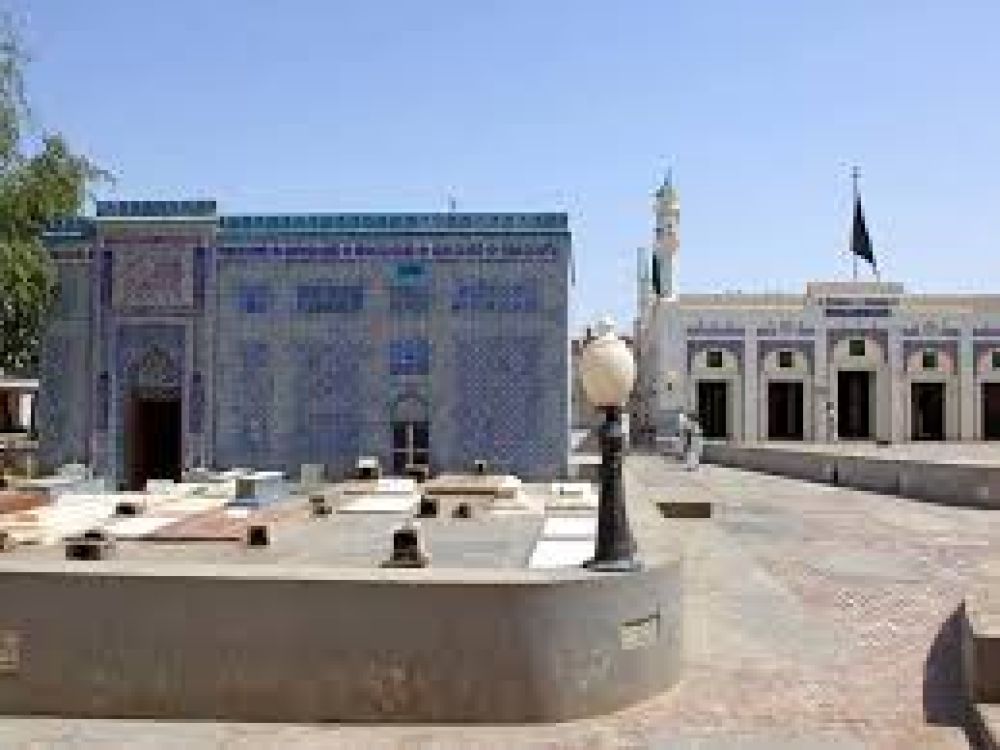

The tomb of Shah Gardez is one of the most esteemed historical landmarks located in Multan, a city often referred to as the City of Saints due to its rich Sufi traditions and shrines. This tomb is dedicated to a revered Sufi saint, Hazrat Shah Yousaf Gardezi, affectionately known as Shah Gardez. He was a 12th-century sufi who traveled to Multan from Gardez, Afghanistan, and is credited with playing a significant role in the spread of Islam in this region. His contributions to the spiritual and cultural heritage of Multan have been immense, and to this day, he is celebrated and remembered through his mausoleum, which has become a prominent spiritual and touristic attraction.
The Tomb of Shah Gardez boasts a blend of architectural designs, significant of the Multani style that has evolved through centuries of Islamic, Persian, and local influences. Its striking blue and turquoise mosaics, intricate tile work, and imposing dome are classic emblems of the architectural prowess of the time. Over the years, restorations and preservations have ensured that the tomb remains a testament to the grandeur of early Islamic architecture, pulling in visitors and academics alike who are keen to delve into its history and aesthetics.
Tourism at the Tomb of Shah Gardez has traversed through various phases. Initially, the site mainly attracted pilgrims and followers of Sufism. However, with time and the inclusion of Multan in key travel guides and Pakistan's tourism push, it began receiving a wider array of visitors including history buffs, architecture enthusiasts, and those seeking to understand more about Sufi traditions.
Despite political and social evolutions influencing tourism waves in Pakistan, the Tomb of Shah Gardez has remained a steady point of interest. With increased efforts toward promoting cultural heritage sites, the tomb has seen greater footfall in recent years as part of cultural and historical tours of the city of Multan.
In the face of a changing global tourism industry, the Tomb of Shah Gardez and the region as a whole have started adopting new trends. Ecotourism and sustainable travel are becoming more pronounced, with several initiatives aiming to preserve the site's integrity while accommodating tourists. Moreover, the rise of digital platforms has encouraged virtual tours and online galleries, allowing those unable to visit in person to experience the tomb's magnificence from afar.
Additionally, the Pakistani government's focus on tourism has led to improved infrastructure and facilities around historical sites like Shah Gardez's tomb. Tourist information centers, better signage, and enhanced security have made the site more accessible and comfortable for visitors, thus broadening its appeal.
The tomb continues to play a pivotal role in the cultural life of Multan. It is not just a mausoleum but also a center for religious gatherings, Sufi music festivals, and scholarly events, contributing heavily to the tourism sector of the region. With continued attention to conservation and responsible tourism practices, the Tomb of Shah Gardez is set to remain one of Pakistan's cherished historical attractions, inviting both local and international tourists to uncover the spiritual depth and artistic beauty it holds within its ancient walls.
Future prospects indicate a positive trajectory for tourism at this historic site with a potential increase in cultural festivals and academic symposiums dedicated to Sufism and South Asian art, further cementing the tomb’s status as a beacon of history and culture in Pakistan.